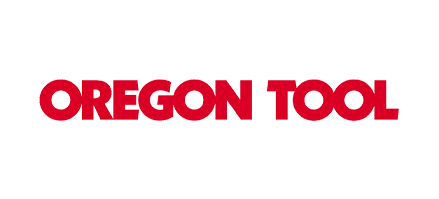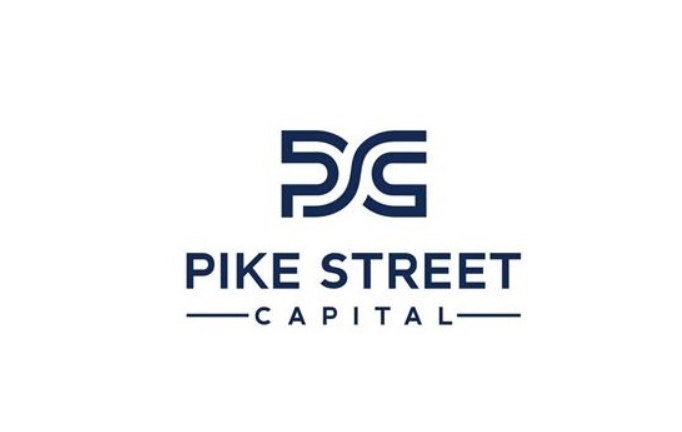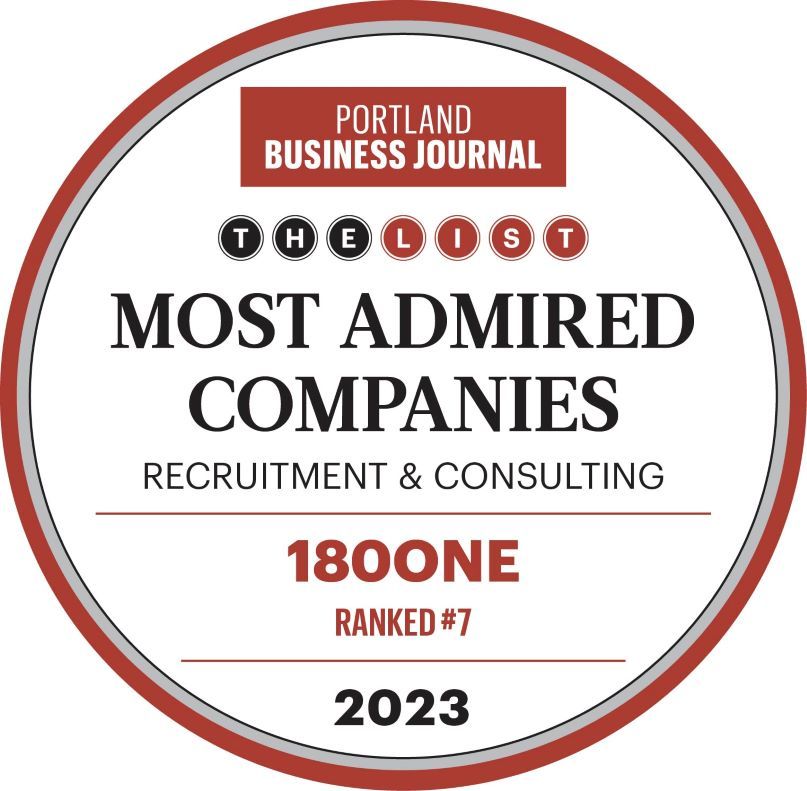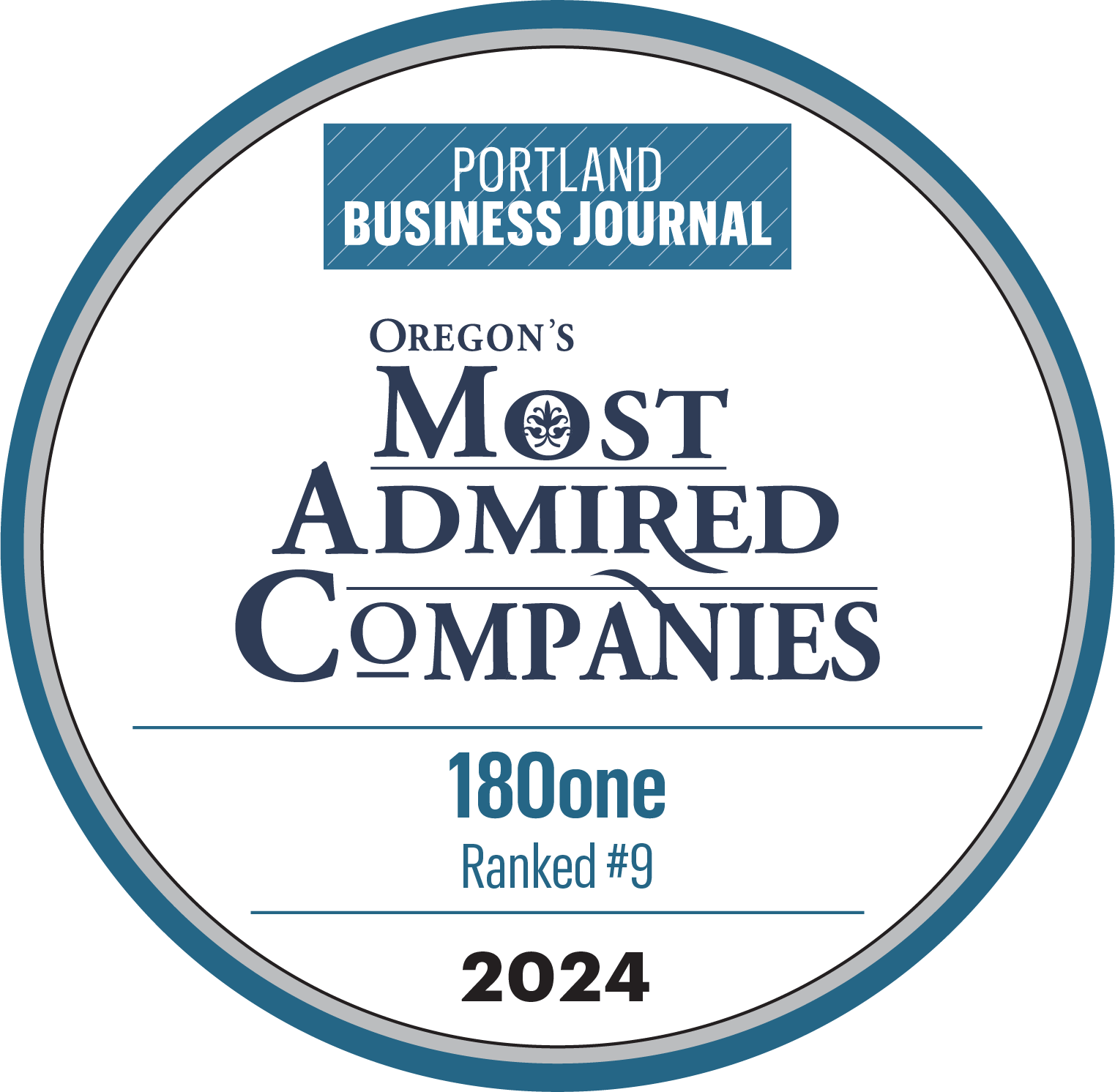Water cooler wisdom
Insights

In today’s hyper-competitive business environment, retaining top talent has become one of the most pressing challenges for organizations of all sizes. According to recent data, 76% of private company executives consider talent retention a key to remaining competitive , and for good reason. The cost of replacing an employee can reach up to two times their annual salary, not to mention the loss of institutional knowledge, customer relationships, and team morale that often follows. Yet despite leaders recognizing its importance, 51% of employees are actively looking for or open to a new opportunity . This means that roughly half of your workforce could walk out the door at any time if they find a better offer, stronger culture, or more growth potential. In such a landscape, retention isn’t just an HR function; it’s a strategic imperative. Below, we explore the key drivers of employee retention and how companies can build a culture that keeps their best people engaged, loyal, and thriving. 1. Build a Culture of Recognition and Trust People don’t just work for paychecks—they work for appreciation. Studies show that 71% of employees would be less likely to leave if they were recognized more frequently . Recognition goes far beyond annual awards or performance reviews; it’s about cultivating a daily culture of appreciation. When employees feel that their contributions are valued, they’re more motivated, more loyal, and more invested in the company’s success. But recognition must be genuine and consistent. It can take many forms: a manager’s public praise in a meeting, a peer-to-peer “thank you” program, or even a personalized message from leadership. Recognition reinforces belonging, and belonging drives engagement. However, appreciation alone isn’t enough if leaders fail to act on employee feedback. When organizations solicit feedback but do nothing with it, it creates frustration and mistrust. Employees start to believe leadership doesn’t listen, which erodes morale. Transparency about what’s being done with feedback, whether changes are implemented or not, is essential to maintaining trust and retention. 2. Strengthen Leadership and Management Quality It’s often said that people don’t quit jobs, they quit managers. The data support this: seven out of ten workers who quit their jobs do so because of a bad manager . Poor management can take many forms, micromanagement, lack of communication, inconsistent expectations, or insufficient support. Whatever the cause, bad management destroys engagement faster than almost any other factor. To retain your best talent, invest in developing your leaders. Provide training on emotional intelligence, communication, and conflict resolution. Encourage managers to hold regular one-on-ones that focus on coaching rather than just task management. Good leaders inspire people to stay and grow; bad ones drive them away. Organizations that prioritize leadership development send a clear message: we care about your experience here, not just your output. 3. Make Onboarding an Experience, not a Process The employee experience starts on day one. A strong onboarding program sets the tone for engagement, connection, and retention. Research shows that 69% of employees are more likely to stay for at least three years after a great onboarding experience . That’s a powerful return on investment for something many companies still treat as a checklist exercise. Effective onboarding goes beyond paperwork and orientation. It integrates new hires into the company culture, connects them with mentors, and helps them understand how their role contributes to the organization’s mission. The first 90 days are critical; employees decide whether they see a long-term future with the company based largely on this period. Investing in structured, meaningful onboarding experiences pays dividends in loyalty, productivity, and morale. 4. Offer Continuous Learning and Career Growth In an era of rapid technological change, professional development is not just a perk; it’s a necessity. 94% of employees say they would stay longer if they had more learning opportunities. That statistic should grab every executive’s attention. Employees want to grow, evolve, and feel like they are moving forward in their careers. Creating a culture of continuous learning means offering access to courses, mentorship programs, cross-departmental projects, and leadership pathways. It also means making learning accessible through digital platforms, lunch-and-learns, or sponsorships for certifications. Career stagnation is one of the biggest drivers of turnover. When employees see no path upward, they start looking outward. Companies that invest in developing their people not only improve retention but also future-proof their workforce for tomorrow’s challenges. 5. Align Compensation with Value While culture, recognition, and growth matter deeply, compensation remains a critical factor. Fifty-six percent of employees say compensation is a top reason they would consider leaving . Fair pay isn’t just about keeping up with competitors; it’s about showing employees they are valued. This doesn’t always mean being the highest-paying employer in your market, but it does mean being competitive and transparent. Regular salary benchmarking, performance-based bonuses, and clear communication about pay structures build trust and loyalty. Additionally, benefits play a huge role. Health insurance, retirement contributions, flexible work arrangements, and mental health resources are all part of the total compensation package employees evaluate when deciding whether to stay. 6. Foster a Sense of Purpose and Belonging Employees today are looking for more than just a job; they’re looking for meaning. They want to know if their work has purpose and that their company stands for something beyond profit. This is especially true for younger generations entering the workforce. Creating purpose means connecting daily tasks to the broader mission and impact of the organization. When employees understand how their work contributes to something bigger, whether it’s serving customers, improving communities, or driving innovation, they’re more likely to stay committed and engaged. Belonging also plays a major role. Inclusive cultures where diverse voices are valued foster higher engagement and retention. Employees should feel they can bring their authentic selves to work without fear of judgment or exclusion. 7. Use Data to Drive Retention Strategy Retention isn’t a guessing game; it’s measurable. Use employee engagement surveys, turnover data, and stay interviews to understand why people stay and why they leave. Look for patterns by department, manager, or tenure. Once you identify the drivers of turnover, act quickly. Whether it’s improving communication, adjusting workloads, or rethinking career paths, data-driven decisions allow you to focus resources where they’ll have the greatest impact. Remember: what gets measured gets improved. Retaining top talent isn’t just an HR initiative - it’s a company-wide commitment. From executives to front-line managers, every leader has a role to play in creating an environment where people feel valued, supported, and inspired to stay. In the end, companies that treat employees as their most valuable asset - and act accordingly- will not only retain their best talent but also attract more of it. In a world where skilled workers have more choices than ever, the organizations that win will be those that make people want to stay.

In today’s business climate, reorganizations have become the norm rather than the exception. Companies shift structure to respond to market changes, streamline costs, adopt new technologies, or realign with strategy. But while the headlines focus on job cuts or new leadership, one critical factor often overlooked in the success or failure of a reorganization is managerial span of control : the number of direct reports assigned to each manager. When companies get this wrong, they risk derailing even the best-planned structural change. When they get it right, the results include faster decision-making, improved employee engagement, and better execution of strategic goals. So how do the most successful companies handle this delicate balance during a reorg? The Pitfalls of Overloading Managers The pressure to do more with less can tempt organizations to increase the number of employees reporting directly to each manager. After all, fewer managers mean lower salary overhead, less bureaucracy, and theoretically, a leaner, faster organization. But research consistently shows that increasing a manager’s span of control beyond a certain point leads to declining effectiveness , both for the manager and their team. According to a comprehensive study by Bain & Company, companies with top-quartile performance in productivity and employee engagement tend to cap manager spans at no more than 7 to 10 direct reports , depending on the complexity of the work and the level of autonomy of the team. Beyond this range, several problems begin to surface: Decreased coaching and development time: With too many direct reports, managers struggle to provide regular feedback or support individual growth. Slower decision-making: Managers become bottlenecks as more team members wait for approvals or guidance. Increased burnout: Overloaded managers report higher levels of stress, disengagement, and turnover. Reduced innovation: Less time for strategic thinking means less opportunity to solve problems creatively or improve team performance. Harvard Business Review echoes this concern, noting that “as spans widen, the average quality of management and leadership drops,” especially in knowledge-driven or high-complexity work environments. Span of Control: One Size Doesn’t Fit All So what’s the right number? The answer depends on context , and smart companies know that not all roles, teams, or business units require the same structure. Key variables include: Task complexity: Teams doing routine, repeatable work (like call centers or transactional processing) can operate effectively with spans as wide as 15-20 direct reports. In contrast, research and development teams often require narrower spans due to higher collaboration and oversight needs. Employee experience: Highly experienced, autonomous employees require less hands-on supervision, allowing for broader spans. Manager capability: Not all managers are equally equipped to handle large teams. Leadership training, experience, and support systems (like team leads or AI tools) can influence optimal span. Organizational culture: Companies with strong cultures of self-management and clear accountability structures may tolerate wider spans without performance drops. A 2023 McKinsey report emphasizes this variability, stating, “Leading companies tailor spans of control by role and level, not by arbitrary benchmarks.” Case in Point: Reorg Success Stories Let’s look at a few organizations that have successfully navigated reorgs by paying close attention to managerial spans: 1. Microsoft During Satya Nadella’s early tenure as CEO, Microsoft underwent a major organizational overhaul to break down silos and improve collaboration. A key part of the strategy was flattening the org , but not indiscriminately. Nadella emphasized “clarity of purpose” and invested heavily in leadership development to ensure managers were ready to handle broader spans only where appropriate. The result? Productivity rose, engagement improved, and innovation accelerated across product teams. 2. Procter & Gamble (P&G) P&G restructured in the early 2010s to reduce costs and improve agility. Rather than simply cutting layers, the company also reassessed manager-to-employee ratios by function. In areas like finance, where standard processes prevail, spans increased. In innovation and marketing roles, they were kept tight to preserve creativity and oversight. The tailored approach helped P&G maintain performance through a major shift. 3. Spotify Famous for its “squad” model, Spotify empowers small autonomous teams with clear leadership support. Managers, often called Chapter Leads, have limited spans to ensure close mentorship and skill development within specific technical domains. This model has supported Spotify’s growth while preserving agility and innovation. Practical Guidance for Leaders Planning a Reorg If your company is considering, or currently navigating, a reorganization, here are five evidence-based principles to keep in mind: 1. Start with the work, not the structure Begin by analyzing the actual tasks teams are responsible for. How complex is the work? How interdependent are the roles? What level of oversight is needed? Design the structure around the needs of the work, not arbitrary span targets. 2. Avoid flattening without a function Flattening layers can reduce costs, but it can also create chaos if not executed thoughtfully. Ensure that wider spans are matched with the right capabilities, tools, and cultural support. 3. Invest in manager readiness If you do decide to widen spans, ensure your managers are trained in time management, delegation, coaching, and the use of technology. Even experienced managers can falter without support. 4. Use data to monitor and adjust Keep track of KPIs like employee engagement, turnover, decision speed, and manager satisfaction post-reorg. These can provide early warning signs if spans are too wide or teams are struggling. 5. Communicate clearly and consistently Structural changes can breed uncertainty. Communicate not just what is changing, but why, and how it will improve the experience for both managers and their teams. Structure Should Enable Strategy A reorganization is not just a reshuffling of boxes on an org chart, it’s an opportunity to realign your workforce with your business goals. But even the most visionary strategy will falter if leaders are overwhelmed, disengaged, or unsupported. As the research shows, successful reorgs pay close attention to the human factor. Avoiding overly wide spans of control is not about bureaucracy; it’s about enabling leaders to lead .

In leadership hiring, one belief persists above nearly all others: that past performance is the best predictor of future success. It’s logical, comforting, and intuitive. After all, if a leader delivered results before, higher revenue, a successful turnaround, a winning streak -they must be capable of doing it again. But that assumption is dangerously flawed. A growing body of evidence, real-world missteps, and cautionary tales suggest that evaluating a leader based solely (or even primarily) on past results can lead to costly misalignments. A recent example highlights this perfectly: The University of North Carolina’s headline-grabbing hire of NFL legend Bill Belichick as head football coach. With six Super Bowl rings and a reputation as one of the greatest coaches in history, Belichick’s track record was unparalleled. Yet in his college football debut with UNC, his team suffered a lopsided 48–14 loss. Suddenly, it was clear: past greatness didn’t guarantee future success in a dramatically different context. While we know Coach Belichick is very early in his tenure at UNC, it’s a fresh reminder that this example extends far beyond sports. It speaks directly to how businesses approach executive hiring, and why it’s time to shift the paradigm. 1. Context Is Everything A key mistake in interpreting a leader’s past success is ignoring the unique conditions under which that success occurred. Was the company in a growth market? Did the executive have access to elite teams, ample resources, or timing that favored bold moves? An executive who excelled in a highly structured, well-capitalized organization may not thrive in a lean, ambiguous, or turnaround environment. Just as Belichick moved from the resource-rich NFL to a university setting with completely different dynamics, many business leaders falter when they switch into unfamiliar ecosystems. Context can make or break performance, and no résumé bullet point can capture that nuance. 2. Success Is Rarely a Solo Act Leadership achievements often look like individual triumphs: “Led $500M product launch,” “Turned around underperforming division,” or “Grew revenue by 60%.” But these outcomes are almost always the result of collective effort. High-performing teams, strong market tailwinds, or favorable internal politics may have played a significant role. Without understanding the true contributors to success, companies risk crediting one person for what was actually a team-driven or market-driven win. Belichick’s NFL success, for example, wasn’t built in a vacuum, it involved legendary players, long-standing staff, and decades of organizational infrastructure. When hiring executives, we must dig deeper: Was the leader truly driving results, or were they simply in the right place at the right time? 3. The Skills That Worked Before May No Longer Apply Many executives ascend by mastering a particular set of skills, scaling a startup, optimizing supply chains, leading sales, but the demands of a new organization may require a completely different skill set. A tactically brilliant operations leader may struggle in a CEO role that demands vision, cross-functional influence, and public-facing leadership. Similarly, an aggressive change agent may clash with a culture that values steady consensus-building. In Belichick’s case, the NFL rewards control, discipline, and closed systems. College athletics requires recruiting 17-year-olds, navigating academic culture, and engaging with boosters. Translated to the corporate world: the same leadership playbook won’t always work in a different environment. 4. Cultural Fit Often Trumps Credentials More than half of executive failures can be traced back to a mismatch in values, communication style, or organizational expectations. Culture fit isn’t about superficial traits - it’s about deep alignment with how a company makes decisions, treats people, and approaches problems. A highly hierarchical leader from a Fortune 50 firm may feel paralyzed in a startup where decision-making is fast and informal. Conversely, a founder-style leader may chafe against the bureaucracy of a multinational. In Belichick’s case, the shift from professional players to student-athletes required more than tactical expertise - it required a mindset and relational approach that wasn’t part of his long NFL tenure. Culture was the hidden barrier. 5. The Future Requires Adaptability, Not Repeatability The pace of change in business today is staggering. AI, hybrid work, geopolitical instability, and generational shifts in employee values mean that today’s leaders must continuously learn, pivot, and adapt. Past performance often reflects a leader’s ability to optimize for the conditions that once existed - not necessarily their ability to navigate what’s coming next. Instead of asking, “What has this leader done?” the better question is, “How do they think? How do they learn? Can they lead through ambiguity?” Executives with linear, legacy-bound thinking may fall short in organizations seeking transformation. Adaptability, not a polished track record, is becoming the most valuable leadership asset. 6. The Halo Effect Clouds Judgment High-profile successes create a “halo effect,” where we assume someone who succeeded in one role will succeed anywhere. It’s why hiring managers are drawn to big names and prestigious brands. But prestige can mask weaknesses. Hiring a famous CEO from a household-name tech company might seem like a coup, until they struggle in a smaller, more complex environment with fewer resources. The same logic applies to Belichick’s move to UNC. The name was dazzling. The record was flawless. But the assumption of transferable success was flawed. Boards and hiring committees must challenge their own biases and evaluate candidates with fresh eyes. So What Should Companies Hire For? Rather than focusing solely on achievements, companies should shift toward evaluating capability and potential . Here’s how: Learning Agility : Has the leader successfully reinvented themselves in different roles or industries? Self-Awareness : Can they reflect critically on past experiences and acknowledge where they’ve failed? Cultural Intelligence : Are they attuned to the nuances of different organizational cultures? Systems Thinking : Can they see the big picture and lead across functions, markets, and time horizons? Emotional Intelligence : Do they inspire trust, connect with people, and lead with empathy? These traits are harder to measure than revenue growth or market share, but far more predictive of long-term success. The Goal Line The University of North Carolina’s hiring of Bill Belichick was bold, ambitious, and rooted in the assumption that his past greatness would translate seamlessly into a new role. When it didn’t, the world was reminded of a difficult truth: past performance is an input, not a guarantee. In business, the stakes are just as high. Leadership decisions shape strategy, culture, and value creation. To get those decisions right, we must look beyond the résumé and consider who a leader is, not just what they’ve done. Because in a world of constant change, the leaders who succeed are not those who repeat the past, but those who are ready to lead into the unknown.

When it comes to picking a new CEO, most boards reach for the usual suspects: executives with deep industry experience, often from within the same company or sector. That approach can feel safe, familiar candidates, known resumes, and minimal learning curves. But sometimes, playing it safe is the riskiest move of all. Two bold CEO appointments, Lou Gerstner at IBM in 1993 and Luca de Meo at Kering (home to Gucci, Saint Laurent, and Balenciaga) in 2025, offer compelling lessons in why bringing in an outsider can not only revitalize a struggling company but completely redefine its future. When a company is facing a critical inflection point, whether due to market shifts, internal stagnation, or a crisis of identity, looking beyond the usual talent pool may be exactly what’s needed. The IBM Pivot: Why the Best Choice Isn’t Always the Obvious One When IBM was on the brink of collapse in the early 1990s, the board had every reason to hire a tech industry insider. The company’s mainframe business was declining, and pundits believed the only way forward was to break it apart. The business media circled around technologists like John Sculley (Apple), Ben Rosen (Compaq), and George Fisher (Motorola) as obvious successors for IBM. It seemed clear: IBM needed someone with computer experience. Instead, the board chose Lou Gerstner , a marketing-focused executive with no background in tech. He had led American Express but had never worked at a tech firm. To most, it seemed like a wild bet. But Gerstner had what IBM truly needed: a clear-eyed view of business fundamentals, customer orientation, and the courage to challenge entrenched thinking. Within weeks, he diagnosed IBM’s core problem - not a dying mainframe business, but a bloated cost structure and poor pricing strategy. He slashed costs, dropped prices, and pivoted the company toward software and services. The result: IBM swung from an $8 billion loss to a $3 billion profit in under two years. The stock doubled in less than three. The takeaway? Gerstner succeeded not because he understood technology better than the insiders, but because he saw the business more clearly. His outsider lens became his greatest asset. Kering’s Gamble: When a Fashion House Needs a Fixer Fast-forward to 2025. The luxury giant Kering , home to Gucci, Saint Laurent, and Balenciaga, is flailing. Once a cultural powerhouse, the company has lost over 60% of its market value in two years. Gen Z is turning away. Investors are panicking. Gucci, the group’s crown jewel, has lost its sparkle. Leadership is uncertain. The traditional luxury playbook isn’t working. Enter Luca de Meo , a car executive. Best known for his turnaround successes at Fiat, SEAT, Volkswagen, and most recently Renault, de Meo is a brand strategist, not a fashion insider. But in an unexpected move, Kering’s longtime CEO François-Henri Pinault tapped him as his successor. To some, the decision was shocking. To others, it was exactly what Kering needed. Like Gerstner, de Meo is a seasoned operator with a history of revitalizing stagnant brands. He brought the Fiat 500 back to life. He revived Renault’s design appeal. And, importantly, he understands how to manage complexity at scale, just like a fashion conglomerate demand. Pinault explained the decision simply: “His experience at the helm of an international listed group, his sharp understanding of brands, and his sense of a strong and respectful corporate culture convinced me that he is the leader I was looking for.” In other words, Kering isn’t betting on fashion expertise. It’s betting on vision, brand building, and courage , qualities that transcend sectors. What Great Boards Understand About CEO Selection These two stories - IBM in 1993 and Kering in 2025 - share a deeper lesson about board behavior: great boards don’t just look for experience. They look for fit, capability , and contextual leadership . According to governance experts, the best board members do four things related to CEO selection that others often overlook: Clarify essential qualities : They define the two or three critical capabilities required to lead the company now , not a generic list of leadership traits. Stay open-minded : They don’t default to insiders or industry lifers. They consider external candidates who might bring unconventional strengths. Understand true fit : They go deep to match the candidate’s strengths to the business’s unique challenges - not just resume credentials. Accept imperfections : No candidate is perfect. Great boards don’t let minor gaps outweigh major potential. The IBM board, for example, didn’t get fixated on Gerstner’s lack of tech experience. They focused on his customer acumen, strategic thinking, and execution muscle . Kering is doing the same with de Meo: prioritizing brand vision and organizational agility over fashion-world familiarity. Why Outsiders Sometimes Make the Best Insiders There’s a myth that only someone “from the industry” can understand a company’s product or sector. But often, industry veterans are too close to the way things have always been done . They bring assumptions, biases, and sometimes too much reverence for tradition. Outsiders, on the other hand, are unencumbered. They ask disruptive questions. They bring fresh playbooks. They’re more willing to cut sacred cows or challenge failing strategies. And when paired with a strong leadership team that fills in any gaps, they can create transformative results. In both IBM and Kering’s case, their challenges weren’t about industry-specific knowledge. They were about strategic misalignment, outdated business models, and fading relevance. And those are problems a great leader, regardless of background, can solve . So, When Should You Look Outside? Hiring an outsider isn’t always the right call. But it can be the smartest one in situations like: An identity crisis (like Kering): when the company no longer knows who it is or how to connect with a new generation of consumers. A deep turnaround (like IBM): when the internal culture is stuck and bold change is needed. A strategic pivot : when the business must evolve quickly, and current leadership lacks the skills or courage to get there. A stagnant succession pool : when the internal candidates reflect the past more than the future. Bold Moves Create New Futures Both Lou Gerstner and Luca de Meo walked into the industries they weren’t born in. They remind us that leadership is less about where you come from, and more about how you think, act, and lead. Boards that have the courage to look outside their industry not only to widen the talent pool - but they also give their companies the best shot at meaningful transformation. In moments of crisis or reinvention, you don’t need more of the same. You need someone who sees things differently and has the guts to act on it.

How the Youngest Team in the NBA Won a Championship, and What It Teaches Companies About Rethinking Experience. In one of the most remarkable and inspiring seasons in recent sports history, the youngest team in the NBA defied all odds and clinched the championship title. Even more remarkable was that the Thunder were the youngest No. 1 seed in NBA history. Without the weight of veteran stars or a legacy of experience to lean on, this squad demonstrated that youth, agility, and fearless innovation could overcome the status quo. This isn’t a fluke. It’s the result of a deliberate, long–term vision, drafting and developing young talent, investing in player development, and creating a culture that prizes collaboration and growth over seniority. Their journey offers more than just a great sports story; it challenges the way companies view experience and value within their teams. The Traditional View: Experience as a Default Proxy for Value For decades, most organizations have equated years of experience with effectiveness. When hiring senior leaders, companies often use tenure as a key filter. Promotions frequently go to those who have "put in the time." And while experience certainly brings value - especially in decision-making, risk assessment, and stakeholder management - it should no longer be treated as the only or best predictor of future success. The Thunder’s 2025 title flipped that thinking on its head. They didn’t win because they had a deep bench of battle-hardened veterans. Their victory reminds us that in fast-moving environments, potential often outperforms pedigree. The Business Parallel: Rethinking the Experience Premium In corporate environments, experience has long been equated with value. Resumes laden with years of service and past roles often carry more weight than fresh ideas or untested energy. While experience can bring insight and stability, over-reliance on it can lead to stagnation. The NBA championship victory of this young team disrupts that thinking. It underscores a powerful idea: in rapidly changing environments, adaptability, curiosity, and the ability to learn fast can be more impactful than tenure. Companies today operate in a world that’s evolving faster than ever. Technology, consumer behavior, and market dynamics shift constantly. In such a climate, organizations that prize agility and fresh thinking often outperform those clinging to traditional hierarchies and outdated assumptions. Experience Is Still Valuable- But It’s Not Everything This isn’t a dismissal of experience. Seasoned professionals bring wisdom, historical context, and leadership that’s often critical. Just as a team might need a veteran presence in the locker room, companies benefit from experienced leaders who can guide and mentor. Similarly, companies should build environments where experience and youth are complementary, not hierarchical. That means creating mixed-age teams, mentorship programs that go both ways (reverse mentoring), and decision-making processes that value ideas over job titles. Cultural Transformation Begins at the Top For this kind of transformation to occur in business, leadership must challenge their own biases. Hiring practices, promotion pathways, and meeting dynamics often default to favoring experience over potential. To change this: Redefine Value Metrics : Shift from measuring success solely by tenure or past accomplishments to include adaptability, innovation, and team impact. Empower the Young : Give younger employees meaningful projects and leadership opportunities. Let them prove what they can do, not just what they’ve done. Encourage Risk-Taking : Just as the young NBA team took bold shots and played an unpredictable game, companies should reward intelligent risk-taking rather than punishing failure. Foster Intergenerational Collaboration : Combine the best of both worlds—pair youthful energy with seasoned insight for more balanced, resilient teams. The Future Belongs to the Fearless The youngest NBA team’s victory wasn’t just a basketball achievement; it was a cultural statement. It challenged the myth that experience is the ultimate determinant of success and showed the power of trust, teamwork, and youthful fearlessness. For businesses watching from the sidelines, the lesson is clear: if you want to build a championship organization, don’t just look at the old playbook. Cultivate fresh energy, bold thinking, and dynamic execution that youth can bring. Create space for new voices to rise. Experience will always have its place, but in the new era of work, potential might just be the most valuable asset of all.

180one is pleased to announce our recent partnership with VSG and the resulting hire of their Vice President of Sales & Marketing Dover’s Vehicle Service Group (VSG), is the global leader in designing and manufacturing vehicle service, collision and automotive OEM equipment. It is one of the founding companies of Dover Corporation, an eight billion dollar diversified global manufacturer. VSG consists of fifteen leading vehicle lifting brands (Rotary, Forward, Blitz, Ravaglioli etc.), collision repair (Chief), wheel services, diagnostics (Butler, Rotary, Chief and Ravaglioli) and tier-one automotive brands (WARN Automotive) with operations worldwide, including regional business operation centers and large manufacturing facilities in the U.S., Europe and Asia. Congratulations to VSG and the 180one Search Team on a successful executive placement!

At 180one, we see A LOT of resumes. Some look like they were typed on a Brother Word Processor 30 years ago, some are 6 pages long, 2 pages long, some have different fonts and sizes of fonts throughout, and then there are third party professionally written resumes - easy to spot, hard to comprehend, and make the reader ask the question – if the candidate can’t write their own resume, what else can’t they do that they said they’ve done? In the high-stakes world of job hunting, a well-polished resume is believed to be the gateway to securing an interview. As a result, many job seekers turn to professional resume writers to boost their chances. While this can be helpful, it can also create inconsistencies and red flags that hiring managers and recruiters quickly learn to recognize. If you're on the hiring side or the job seeking side, here are 5 factors to consider when reviewing or submitting a professionally written resume. 1. Overly Polished or “Corporate” Language One of the most obvious signs is language that sounds more like a press release than a personal statement. Phrases like “forward-thinking professional with a proven track record of leveraging synergistic strategies” may impress at first glance—but they often signal a generic, massaged resume. Why it’s a red flag: Recruiters are increasingly wary of “buzzword bingo.” In fact, a 2022 study by Cultivated Culture found that over 50% of resumes included vague jargon or fluff that made it difficult to identify actual achievements. Many professionally written resumes are filled with generic buzzwords like "results-driven," "synergy," and "dynamic leader." While these terms may sound impressive, they often lack substance and fail to convey meaningful information about a candidate's actual skills or achievements. According to a study by Cultivated Culture, 51% of resumes included fluffy buzzwords, clichés, or the incorrect use of pronouns, which can turn off potential recruiters. 2. Mismatch Between Resume and LinkedIn Profile Professionally written resumes often use a distinct tone, layout, and terminology. If a candidate’s LinkedIn profile is far less polished or completely different in format and language, it could indicate the resume was outsourced. Why it’s a red flag: Consistency matters. Hiring managers want to see that a candidate has a clear sense of their professional identity. Discrepancies raise questions about authenticity. 3. Inability to Explain Resume Content in Interviews When a resume is written by someone else, candidates often struggle to elaborate on the content. They might stumble over project details, metrics, or use terminology incorrectly. And sometimes, the candidate just comes right out and say that they had someone else write it for them – which then opens up a bunch of assumptions of the candidate. Why it’s a red flag: You can’t trust a resume at face value if the candidate can’t speak to it with confidence and clarity. It shows that they lack ownership of their work product (or the work product of someone who they hired). 4. Generic or Inflated Achievements Third-party writers often try to make every bullet point sound impressive, even when the underlying work was basic. A line like “Spearheaded initiatives to drive cross-departmental alignment” might describe routine weekly meetings. Why it’s a red flag: Inflation makes it harder to evaluate the real value a candidate brings. It also shows a disconnect between what they actually did and how it's being presented. Plus, does your organization need another blowhard in the conference room who controls the meeting with word salad? 5. Too much information being presented While everyone thinks that AI is controlling the review of every resume and that you need to have every keyword included in your resume to make it to the next step when applying, the truth is that at some point the resume will be reviewed by a human. Professionally written resumes tend to be jam packed with information with visually stunning sections, tables of information, and varying fonts to draw the eye – but it’s just too much for the reader to comprehend what you’ve actually done. Why it’s a red flag: Employers are looking for future leaders who know how to convey their thoughts, ideas, questions succinctly. So if you are unable to accomplish this with your resume – that you’ve had plenty of time to write, edit, modify before distributing – what will happen when you’re on the job presenting in the boardroom? Final Thoughts A professionally written resume isn’t inherently bad, many candidates benefit from outside help, especially if they’re unsure how to present themselves. However, authenticity matters. When hiring managers sense that a resume doesn’t align with the person behind it, they’ll dig deeper and often move on to more transparent candidates. Resumes are personal. They are a summary of all that one has accomplished in their career. This is their professional fingerprint and no one else should have the same fingerprint. So, make sure that the next time you are updating or creating a new resume, make it yours, not someone else’s or trying to be someone you’re not.

180one is pleased to announce our recent partnership with SawStop and the resulting hire of their Director of Supply Chain! SawStop is a leader in premium table saws and accessories, known for its patented Active Injury Mitigation (AIM) technology, which stops a blade in under 5 milliseconds to prevent serious injury. Founded in 2000 by patent attorneys with science and engineering backgrounds, SawStop has over 200,000 saws in use and more than 100 U.S. and international patents. In 2017, SawStop was acquired by Germany’s TTS Tooltechnic Systems, parent of Festool, enabling continued growth, innovation, and a shared commitment to precision, safety, and industry-leading quality. Congratulations to SawStop and the 180one Search Team on a successful executive placement!

In the 2025 NFL Draft, Shedeur Sanders, once projected as a top five pick, experienced a surprising fall to the fifth round before being selected by the Cleveland Browns. This unexpected drop raised questions about his draft stock and the factors influencing team decisions. Despite his impressive college career, including setting school records and other accolades, Sanders' draft experience underscores a crucial lesson for companies: hiring decisions are multifaceted and not solely based on past performance or potential. Just as NFL teams must consider various factors beyond a player's statistics, businesses should adopt a comprehensive approach to hiring, evaluating candidates holistically to ensure the best fit for their organization's needs. While the NFL Draft might just look like a televised event where young athletes get picked by professional teams, beneath the fanfare is a highly strategic, data-driven process that offers invaluable insights into one of the most important business practices: hiring . If you're in the corporate world and responsible for recruiting talent—whether you're a founder, HR executive, or team leader, there's a lot you can learn from how NFL teams approach drafting. Let’s explore how this intense, high-stakes selection process mirrors and can elevate traditional corporate hiring. Understand What You’re Hiring For The first step in great hiring is clarity. In one NFL team, draft results consistently lagged for one side of the ball. A simple survey revealed why: there was zero consensus among scouts and coaches about what success looked like at a key position. Without a shared vision, decisions were scattershot. In business , the same thing happens. Teams rush to hire without aligning on goals. Do you need a disruptive innovator or a steady team player? A generalist or a deep specialist? Skipping this conversation sets you up to fail. Tip : Clearly define roles with specific traits, values, and performance goals before interviewing even begins. Structure Beats Technology Despite all the tech, there’s no magical algorithm that guarantees a good draft pick. What separates the top NFL teams is process , consistent, disciplined evaluation systems. The same principle holds true in business. Unstructured hiring decisions are noisy and prone to bias. Managers get influenced by irrelevant factors: a great handshake, a shared alma mater, or how the last interview went. Consistency comes from structured scorecards, checklists, and predefined evaluation criteria. Tip : Use structured interviews and weighted scorecards to keep evaluations focused and replicable. Keep Evaluators Independent One underrated tactic NFL teams use: separating scout opinions. Some teams purposely blind scouts to each other's evaluations to preserve independent judgment. That’s critical, because once someone hears a strong opinion, they’re prone to “anchor” on it, consciously or not. In corporate hiring , it’s the same story. If the first interviewer gushes about a candidate, others may unconsciously lower their guard. True diversity of opinion only exists if assessments are made independently. Tip : Have team members submit their evaluations separately before group discussions. Interviewing is Like the Combine – But Not Everything The NFL Combine is a week-long showcase where draft prospects go through physical and mental tests. But teams don’t draft solely based on who runs the fastest 40-yard dash. They look at long-term potential, game tape, and coachability . In companies , i nterviews are important, but they’re just one part of a broader evaluation. Candidates may be nervous, overly rehearsed, or misrepresent their skills. Supplement interviews with trial projects, references, and past performance reviews. Tip : Give candidates real-world problems to solve that mimic the work they’ll be doing. Fit Over Flash Some of the NFL’s biggest draft busts were players with jaw-dropping athleticism who simply didn’t fit into the team’s system. Conversely, many late-round picks became legends because they were a great fit for a team's specific needs and culture. In business , skills can be taught, but cultural fit, adaptability, and motivation are harder to instill. Ask: Will this person thrive in our environment? Will they complement our team dynamics? Tip : Ask culture-focused questions and involve future teammates in the interview to assess chemistry. Break Candidates into Components NFL teams don’t evaluate a player as just “good” or “bad.” They break skills down: footwork, decision-making, toughness, coachability. Then they score each attribute separately. In hiring , we often rely on vague impressions. But global ratings are prone to bias and inconsistency across interviewers. Instead, decompose the job into core competencies—communication, technical ability, leadership, and score each explicitly. Tip : Break job performance into 4–6 distinct traits and rate each on a consistent scale. Rebuild the Full Picture- Mechanically After breaking down a candidate’s attributes, NFL teams reassemble their evaluations into an overall rating. Some simply average scores across scouts. It might sound simplistic—but it’s surprisingly effective. In companies , intuitive judgment often dominates. The loudest voice or most senior person can sway the group. Instead, use aggregated, weighted scores as a starting point. It creates a more objective, repeatable process. Tip : Let the data guide your shortlist, then use discussion to refine (not override) decisions. Data-Informed Decisions Are Key NFL franchises now use advanced analytics to measure player performance in ways the eye test alone can’t. From GPS tracking of player speed to AI-assisted video analysis, decision-makers are armed with data. Lesson for companies : Go beyond gut feelings and use structured hiring practices . Utilize assessment tools, skill tests, and personality inventories. Tip : Implement scorecards during interviews and pre-hire assessments for objectivity. High Draft Pick ≠ Guaranteed Success Tom Brady was a sixth-round pick. Kurt Warner went undrafted. Meanwhile, many five-star athletes flamed out. The lesson? Success isn’t always visible on a resume. In hiring , don’t over-rely on pedigree. Grit, curiosity, and coachability are better predictors of future success than past prestige. Tip : Ask candidates about setbacks, learning moments, and how they seek feedback. Final Whistle There is no silver bullet for hiring- no AI tool, test, or gut instinct that will always get it right. But there is a better way: a repeatable, structured, thoughtful process . The NFL Draft, for all its hype, works because the best teams stick to principles: define goals, evaluate consistently, prioritize fit, and learn over time. These same principles can help any organization—from startups to Fortune 500s—build stronger teams and better futures. So next April, when the draft rolls around, don’t just watch for your favorite team’s pick. Take notes. Because if you want to win the talent game, the playbook is already out there.

180one is pleased to announce our recent partnership with Oregon Tool and the resulting hire of their Chief Financial Officer! Founded in 1947, Oregon Tool, Inc. has grown from a basement in Portland, Oregon, to a global designer, manufacturer, and marketer of precision cutting tools, equipment, and accessories for consumers and professionals in more than 110 countries with 3200 team members. Building off the pioneering spirit of its founder, Joseph Buford Cox, Oregon Tool has transformed the cutting industry and has become the world’s #1 manufacturer of saw chain and guide bars for chainsaws and diamond saw chain for concrete and pipe, a leading manufacturer of agricultural tractor attachments, and the leading OEM supplier of first-fit and replacement parts. Its products are sold into the aftermarket through multiple channels, including distributors, dealers, mass merchants, and e-commerce, as well as to original equipment manufacturers for “first fit” use on new equipment. Since its founding in the 1940s, Oregon Tool has grown from a family business into a multinational organization. Congratulations to Oregon Tool and the 180one Search Team on a successful executive placement!

180one is pleased to announce our recent partnership with Pike Street Capital and the successful placement of a new Board Member for Superior Duct Fabrication, a Pike Street portfolio company! Superior Duct Fabrication is a leading provider of commercial and industrial HVAC duct systems, known for its high-quality fabrication, reliability, and customer service. The company serves a wide range of industries, delivering complex ductwork solutions with precision and speed. Pike Street Capital, a Seattle-based private equity firm focused on industrial growth companies, acquired Superior Duct Fabrication as part of its strategy to invest in scalable, high-performing manufacturing businesses. Pike Street partners with management teams to accelerate growth and build long-term value through operational improvements and strategic leadership. As part of this effort, Pike Street Capital partnered with 180one to recruit a new board member to help guide Superior Duct’s continued expansion and success. Congratulations to Pike Street Capital, Superior Duct Fabrication, and the 180one Search Team on a successful board placement!

Let’s face the music, or the new reality that attracting executives to move across the country for an opportunity has become increasingly difficult for a variety of circumstances. As businesses look to recruit top talent at executive levels, understanding the shifts in migration trends before you launch a search, better yet, as you plan a position, might be the difference of landing a great candidate in a reasonable amount of time, or dragging out a search for the unicorn who can’t be found. Let’s look at some of the factors and trends together that might shape how your organization moves forward in conducting a national executive search. Understanding the 2024 Relocation Landscape The 2024 Allied Migration Report paints a picture of a U.S. population increasingly seeking affordable living spaces, a better work-life balance, and more favorable economic conditions. Despite a 20% overall decrease in interstate relocations from 2022 to 2024, the main driver of those relocating is the alignment of their personal and professional goals. The report also underscores the shift toward midsize cities and suburban areas as more desirable destinations. This trend is being driven by a combination of rising housing costs in major cities, economic uncertainty, and a greater demand for improved quality of life. Companies looking to relocate candidates must consider a range of factors to ensure that they are not only attracting talent but also providing a work environment that matches these evolving preferences. Here are 5 key aspects that companies should score themselves against to determine how desirable their location is for the market. Depending on how one scores, it can help highlight the probability of relocating or needing to adjust the candidate profile to match candidates in the current geographic market not needing relocation. 1. Housing Affordability and Living Costs One of the most significant motivators for relocation in 2024 is housing affordability. In 2023, soaring housing costs in urban centers like San Francisco, Los Angeles, and Chicago pushed many people to consider smaller cities and suburban areas where the cost of living is lower. When relocating candidates, it's crucial for employers to consider how the cost of housing in their city or region will impact the candidate’s overall financial well-being. If your company is in a higher cost area, providing a sign-on bonus towards housing can be one lever to pull to cover the gap. 2. Remote Work and Flexible Work Arrangements The rise of remote work in the wake of the pandemic continues to shape relocation patterns. With many employees now able to work from anywhere, some candidates are looking for jobs that allow them to live in more affordable or attractive locations while still benefiting from a competitive salary. The ability to work from home (or a hybrid model) has made relocation less about proximity to the office and more about finding a place that offers a better quality of life. For employers, it’s essential to evaluate whether the role can be offered remotely or with flexible work arrangements. If the company is headquartered in a high-cost city but allows employees to work from anywhere, the business might be able to attract candidates from more affordable regions while offering competitive salaries. On the other hand, if the position requires in-office attendance, it’s important to highlight the benefits of relocating to that city—such as lifestyle factors, community offerings, and career advancement opportunities. 3. Job Market and Industry Opportunities Candidates are increasingly moving to regions where job markets are thriving, particularly in industries like technology, renewable energy, healthcare, and finance. The 2024 Allied Migration Report noted that states with growing job markets are experiencing strong inbound migration. How would classify your region’s overall job market? Candidates want to know that if they were to relocate, and for some reason down the road they leave the organization – what other opportunities exist for them locally. If there are no other reasonable and likely options related to their industry, or expertise - this can pose another hurdle that needs to be addressed. It’s essential to evaluate whether the region offers the kind of industry opportunities that will keep the candidate’s career trajectory on track. 4. Tax Policies and Financial Incentives Tax policies are a key factor influencing relocation decisions in 2024. States with no income tax have seen an increase in inbound migration, with people moving to these states in search of more disposable income. The economic uncertainty and high inflation rates in 2024 have made individuals more conscious of their financial situations, and tax-friendly states are becoming increasingly attractive. Employers looking to relocate candidates should consider the tax implications of moving employees to specific regions. 5. Quality of Life and Lifestyle Considerations Beyond financial factors, candidates are also considering lifestyle factors when deciding where to relocate for work. According to the 2024 Allied Migration Report, many people are moving to regions that offer a better balance of work and life, which includes access to quality healthcare, good schools, recreational activities, and a desirable climate. For employers, this means understanding the lifestyle preferences of potential candidates and emphasizing how the region supports these needs. What’s the Score? So how did your region score? How will it impact how you go to market with the position? Did you adjust the candidate profile to mirror what exists in the local candidate market, or is your region highly desirable to attract the unicorn? As migration patterns evolve, companies that adapt their candidate profiles and expectations to these shifting dynamics will be well-positioned to thrive in an increasingly mobile workforce.



